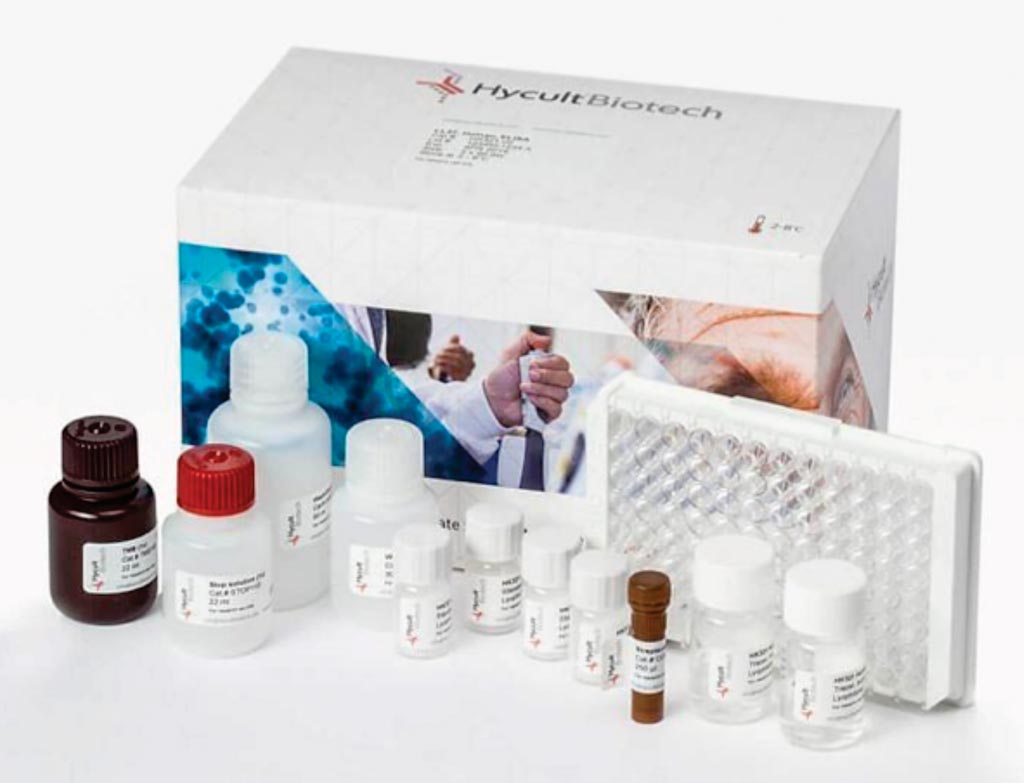Mannose-Binding Lectin Associated with IgG Subclass Deficiency
By LabMedica International staff writers
Posted on 11 Jun 2019
Mannose-binding lectin (MBL; mannan-binding protein or lectin) is involved in innate immune defense, is produced largely by hepatocytes and is encoded by MBL2 (chromosome 10q21.1). MBL promotes killing of microorganisms by complement activation via the lectin pathway and by opsonization.Posted on 11 Jun 2019
Immunoglobulin G (IgG), synthesized by plasma cells, is the predominant of five classes of Igs in humans. IgG subclass deficiency (IgGSD) in adults is characterized by: levels of IgG1–3 subclasses more than two standard deviations (SD) below the population mean; frequent or severe respiratory tract infection; suboptimal IgG responses to pneumococcal polysaccharides; and increased prevalence of autoimmune conditions.

Image: A typical human serum mannose-binding lectin enzyme-linked immunoassay kit (Photo courtesy of Hycult Biotech).
Scientists associated with the University of Alabama at Birmingham (Birmingham, AL, USA) studied consecutive unrelated self-identified non-Hispanic white adults (ages ≥18 years) in a single outpatient referral practice who reported having frequent or severe upper or lower respiratory tract infection, were diagnosed to have IgGSD before October 2, 2018, and in whom serum MBL levels were measured. Frequent infection was defined as four or more episodes per year that required antibiotic therapy. Severe infection was defined as any infection that required in-hospital treatment.
Upper respiratory tract infection was defined as reports of sinusitis, otitis media, mastoiditis, pharyngitis, and tonsillitis. Lower respiratory tract infection was defined as reports of bronchitis, pneumonia, and bronchiectasis. Serum Ig levels were measured using standard methods before IgG replacement therapy was initiated, and serum MBL levels were measured using an enzyme-linked immunosorbent assay and specific levels of MBL ≤50 ng/mL were not reported.
The team reported on 219 patients (mean age 51 ± 13 years; 82.5% women). Thirty-six patients (16.4%) had MBL ≤50 ng/mL. Two MBL measurements were available in 14 patients. The median interval between the first and second measurements was 125 days (range 18–1031). Mean MBL levels of patients aged ≤52 y versus > 52 y at diagnosis did not differ significantly. Mean/median MBL levels of men were greater than those of women, but the difference was not significant. Thirty-six of 219 patients (16.4%) had MBL ≤50 ng/mL. Characteristics of patients with and without MBL ≤50 ng/mL did not differ significantly in univariate comparisons. Proportions of IgG subclass immunophenotypes in patients with and without MBL ≤50 ng/mL did not differ significantly.
The authors concluded that the proportion of the present IgGSD patients with serum MBL ≤50 ng/mL is similar to that of healthy European adults. MBL ≤50 ng/mL was not significantly associated with independent variables they studied. The study was published on May 22, 2019, in the journal BMC Immunology.
Related Links:
University of Alabama at Birmingham









 Analyzer.jpg)




